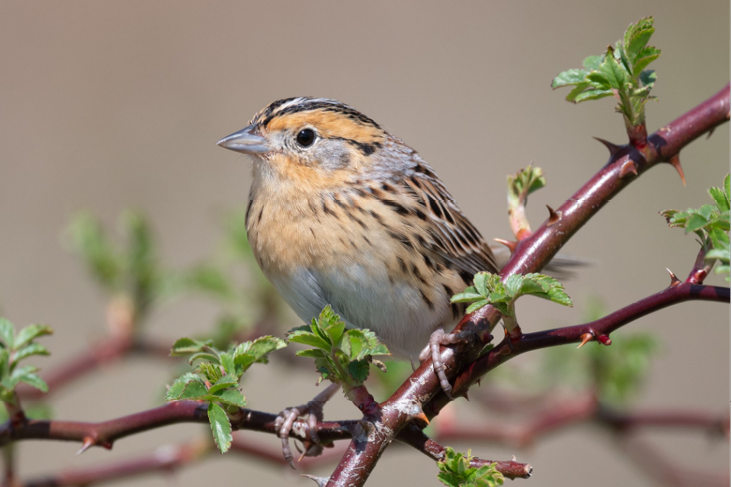Sebastian Jones

Figure 1. An atypically good view of a LeConte’s Sparrow showing its key features. Focus on the bill, facial pattern, and ornate nape and back. All photographs by the author unless otherwise indicated.
Ammospiza sparrows—LeConte’s Sparrow (A. leconteii), Seaside Sparrow (A. maritima), Nelson’s Sparrow (A. nelsoni) and Saltmarsh Sparrow (A. caudacuta)—are a challenging group of colorful (for sparrows) but skulky birds. Some of them have a plumage with intricate patterns and vibrant shades of orange, gray, purple, and brown. Most, however, rarely give observers a chance to see these features for more than a split second at a time.
In Massachusetts, these species present a particular challenge during the fall because all four—plus a handful of similar species that can be confused with them—are occasionally present within a few hundred feet of one another.
Having familiarity with these species’ field marks and habits prior to venturing into the field is crucial; half the identification battle can be addressed before you leave your house. Considering several layers of context is useful.
To view the rest of the article you'll need to
subscribe. Bird Observer publishes original articles on birding locations, on avian populations and natural history, on regional rarities, field notes, field records, photographs, and art work.